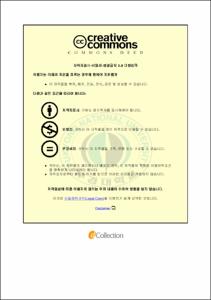마이크로웨이브를 이용한 고무의 가교 특성 연구
- Alternative Title
- A study on vulcanization of rubber by microwave
- Abstract
- 마이크로웨이브를 이용한 고무의 가교 특성 연구 결과는 다음과 같다.
1. 마이크로웨이브 가교 조건에서는 카본 블랙 함량에 따라 편차가 크게 나타나며 카본 블랙 함량이 20phr인 경우 30초 가교시에도 30% 미만의 가교도를 나타내었으며 80phr 30초 가교 조건에서는 100%의 가교도를 나타내었다.
2. 100%의 가교 조건을 만족시키기 위해서는 열풍가교 타입은 두께가 1~3mm 이하이어야 하고 250oC 7분 이상의 시간이 소요되는 반면 마이크로웨이브 가교 타입에서는 카본 블랙의 함량이 30wt% 이상 30초 이상의 조건에서 100% 가교도를 보였다.
3. 마이크로웨이브 가교시에는 비극성 고무인 EPDM 보다는 극성 고무인NBR이 그리고 보강제로는 실리카(Silica) 보다는 카본 블랙(Carbon Black)이 효과적이었다.
4. 가교에 영향을 끼치는 인자로는 컴파운드의 두께, 가교 조건 그리고 카본 블랙의 함량이 있었으며 열풍가교 타입에서는 컴파운드의 두께에 가장 큰 영향을 받는 반면 마이크로웨이브 가교 타입에서 가교에 가장 큰 영향을 끼치는 인자로는 카본 블랙의 함량이었다.
Microwave energy have been used to various fields such as the manufacture of groceries, the process of pulp drying, etc. It is reported that the studies using microwave energy have gradually attempted for practical application to polymer, processing of composite, increase of polymerization speed etc.
When it comes to rubber industry, it is practiced in the process of rbbber curing, especially in the process of continuance curing, as the related studies are more requested.
The study researches the vulcanization character of polar rubber and non polar rubber under the condition of microwave and the microwave vulcanization chracteristics of compound with Silica and Carbon Black, which is used as reinforcement filler.The vulcanization character of rubber by microwave has been analysed by measuring property of degree of curing and a property of cured compound, and have been compared with HAV(hot air vulcanization), typically used in the continuance vulcanization process.
- Issued Date
- 2009
- Awarded Date
- 2009. 2
- Type
- Dissertation
- Publisher
- 부경대학교 대학원
- Alternative Author(s)
- Jung, Woo-Sun
- Affiliation
- 부경대학교 대학원
- Department
- 대학원 고분자공학과
- Advisor
- 이원기
- Table Of Contents
- 1. 서론 = 1
2. 이론적 배경 = 3
2-1. 마이크로파의 기본 이론 = 3
2-1-1. 마이크로파 = 3
2-1-2. 마이크로파의 가열 원리 = 6
2-1-3. 마이크로파 가열의 특징 = 9
2-1-4. 마이크로파의 장점 = 10
2-1-5. 마이크로파의 단점 = 10
2-1-6. 마이크로파의 이용 방향 = 11
2-2. 연속 가교 = 12
2-2-1. 열풍가교 = 12
2-2-2. 로타큐어 = 13
2-2-3. 마이크로파 가교 = 13
2-3. 고무 = 14
2-3-1. 에틸렌 프로필렌 고무 = 14
2-3-2. 아크릴로니트릴 부타디엔 고무 = 15
2-4. 보강제 = 16
2-4-1. 카본 블랙 = 16
2-4-2. 실리카 = 18
3. 실험 = 20
3-1. 실험 재료 = 20
3-1-1. 고무 = 20
3-1-1-1. 에틸렌 프로필렌 고무 = 20
3-1-1-2. 아크릴로니트릴 부타디엔 고무 = 20
3-1-2. 보강제 = 21
3-1-2-1. 카본 블랙 = 21
3-1-2-2. 실리카 = 21
3-1-3. 프로세스 오일 = 21
3-1-4. 첨가제 = 21
3-2. 가교시편의 제조 = 22
3-2-1. 혼합 공정 = 22
3-2-2. 가황 공정 = 22
3-3. 시험 방법 = 24
3-3-1. 가교도 측정 방법 = 24
3-3-2. 기계적 강도 = 24
4. 결과 및 고찰 = 26
4-1. 가교도 = 26
4-1-1. 마이크로웨이브 가교와 열풍가교에서의 가교도 평가 = 29
4-1-2. 마이크로파 노출시간에 따른 가교도 평가 = 34
4-2. 물성 평가 = 36
4-2-1. EPDM vs NBR = 37
4-2-2. 카본 블랙 vs 실리카 = 41
4-2-3. 마이크로웨이브 출력별 = 45
4-3. 마이크로웨이브 조사에 의한 시편의 표면 온도 = 47
5. 결론 = 50
Reference = 51
- Degree
- Master
- Files in This Item:
-
-
Download
 마이크로웨이브를 이용한 고무의 가교 특성 연구.pdf
기타 데이터 / 780.09 kB / Adobe PDF
마이크로웨이브를 이용한 고무의 가교 특성 연구.pdf
기타 데이터 / 780.09 kB / Adobe PDF
-
Items in Repository are protected by copyright, with all rights reserved, unless otherwise indicated.